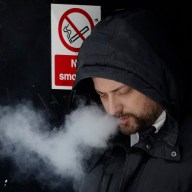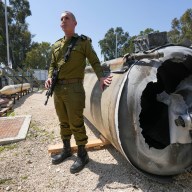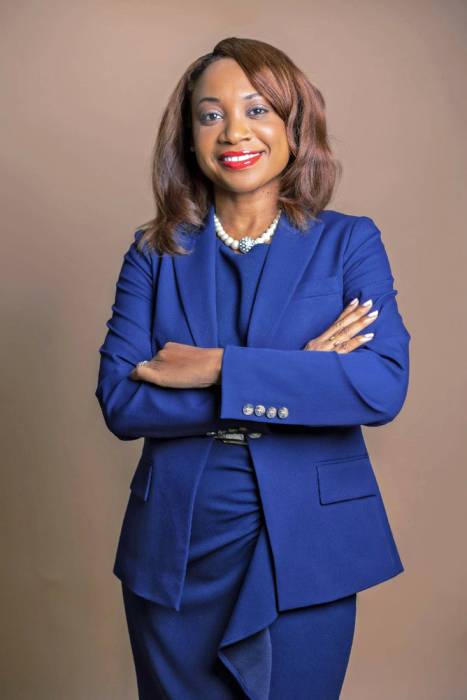Filmmaker Lenny Abrahamson’s current and previous films seem quite different. “Frank” is about a band fronted by a singer (Michael Fassbender) who wears a papier-mache head. “Room” is about a mother (Brie Larson) and son (Jacob Tremblay) who have been held captive for seven years in a tiny room. But they’re both about people trapped in tiny worlds who nudge their way into the rest of the world. “Room,” which won the coveted People’s Choice Award at Toronto, especially for its two lead performances, could have been a brutal and grueling watch. One reason it isn’t is because it’s told from the perspective of the boy, who’s not fully aware of the horrors that are going on. Shooting in close quarters and finding ways to keep it visually diverse must have been difficult. How did you do it?
We took out little parts of the wall. It was really well designed so we could move around easily. We would talk about having the minimum amount of hassle with the maximum flexibility in shooting. You could shoot a lot of different things in close-up, so you can fill the frame with the boy’s face or some detail of the room. You actually had a huge amount of visual freedom. We were trying to get inside his head in a subtle way, without using obvious heightened techniques. We were trying to show that this small space can be a whole world. When you go back to it at the end, you see it in a colder way than before. It was kind of amazing: it’s small but it felt quite full and rich, and it’s just this tiny little box. RELATED: Alan Alda talks “Bridge of Spies” and how to best to portray war There are a number of films that make use of limited space, like “Lifeboat,” “Life of Pi,” “Buried.”
Funny thing is, compared to something like “Buried,” we had loads of options. We had different parts of the room. We had three light sources which could create different moods. What we were trying to do was not make shooting in a small space feel like it was the thing. With “Buried,” it’s like, “Whoa, they made a story work in a coffin!” Or “‘Phone Booth,’ isn’t that amazing?” Then it becomes this d—k-waving exercise, for lack of a better term. “Hey, here’s a filmmaking challenge and look how well we beat it!” I wanted people to disappear into the richness of the story and for us to make it less intrusive. The amazing thing is you have the book, which is a first-person narrator. You lose that. So you think, “How do you keep with him?” The answer is you have his face, which is something you don’t have in a piece of literature. The human face is something you can look at for a long time without getting bored. The second half, when they finally escape and have to adjust to the real world, is very different visually. What was your approach for that?
You’ve held people in this room for so long. You’re with the actors. When you come out you put a wide shot on that garden and you allow the actors to do the work and you build up a soundtrack that’s way more three-dimensional and rich. You have to trust that a certain amount of that discovery will come from just that. You don’t need to go crazy and underscore the contrasts between the two halves. If you do that it becomes heavy-handed. My impulse is to always allow the audience to discover these contrasts and insights for themselves rather than have it wagged in front of their faces. The first half you only have two, sometimes three actors. What was that level of intimacy like for you over the four weeks of shooting that half?
It’s such a long time together. It would be a nightmare if we hated each other. A big thing was in the casting process. We thought it was really important to find a genuinely warm person to play “Ma.” Brie’s a warm and funny person, and Jake’s just a wonderful child. They formed a real relationship. And that core is what made those weeks in the room so bright. When we burst into the real world, in a strange way we felt like the characters. We started to long for the confines again, even though shooting in a small space is tricky and it’s hot and it’s difficult. We thought we were dying to get out, then when we were out it was like, “Oh god, it was so nice when it was just this threesome. Wouldn’t it be sort of nice to be back in that tiny space?” This is pretty heavy material. I imagine you treated Tremblay the way “Ma” treats him, which is not telling him everything that’s going on.
Exactly. It’s like any child in a household where things are going on between adults that kids are only dimly aware of. We found these ways of talking about what’s happening that would make sense to him but wouldn’t be disturbing. Because of the way the story’s structured, we didn’t really need to do that anyway. He doesn’t see anything disturbing. It’s really a film about a happy child, and what’s remarkable is “Ma” is strong enough to create the circumstances for a happy childhood in this grim place. Brie felt like “Ma.” Jake would be prancing around or having a laugh. Even after a take when she’s really upset it was impossible for her to stay in that state. She has to come back to him, because he’s such a happy kid. He’d be like, “Why are you still crying? We cut the camera. You can be happy again!” RELATED: Interview: Brie Larson on keeping it real for “The Gambler” You also don’t dwell on the abuse “Ma” suffers, as a lot of films would.
Emma Donoghue [who wrote the novel and the script] said that sometimes you read an article about a captive in a dungeon. But that’s not the story. That’s the backstory. The film starts in a situation and it’s a journey out. It’s about growing up; it’s just in a heightened context. It’s about the journey we all make from a small, storied and mythologized place of childhood into the outside world. And it’s a story about what it’s like to be parents. It couldn’t be about those things if I was constantly harping on about the abuse. That’s not what the film is about. A lot of your films are about people trapped, sometimes by their own designs, in little worlds. “Frank” is about tiptoeing into the grandness of civilization too.
Yes, indeed. My first films were about people in these very closed lives, and the films stay there. The last two are about tiptoeing out of them. I think I’m becoming more optimistic in my middle age. I’m exploring how it might actually be possible to live in the world.
Lenny Abrahamson says the grim ‘Room’ is actually about ‘a happy childhood’
Follow Matt Prigge on Twitter @mattprigge














